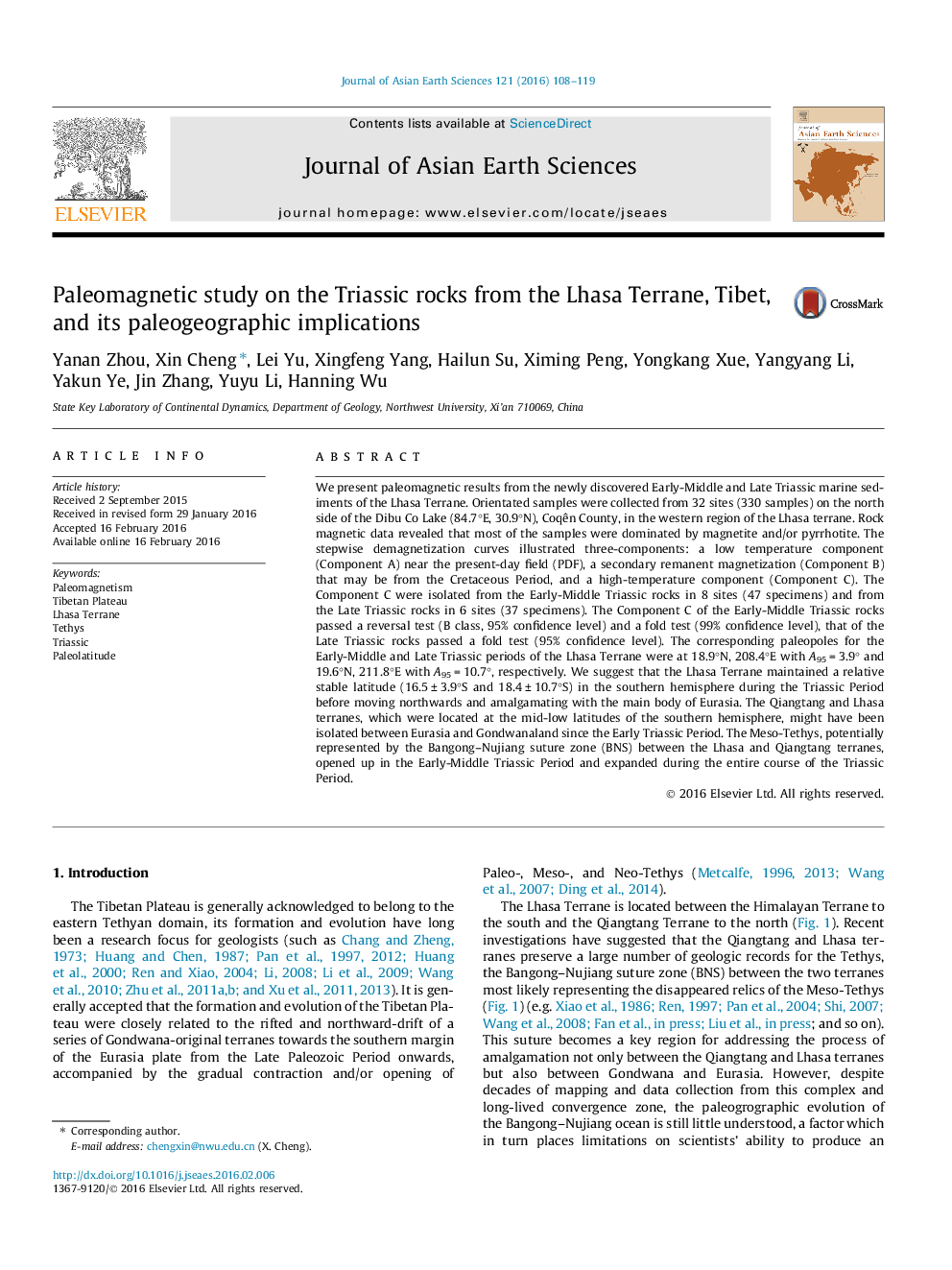| کد مقاله | کد نشریه | سال انتشار | مقاله انگلیسی | نسخه تمام متن |
|---|---|---|---|---|
| 4730073 | 1640350 | 2016 | 12 صفحه PDF | دانلود رایگان |
• We carried out paleomagnetic study on the new discovered and redefined Triassic strata.
• Two reliable poles from Triassic strata of Lhasa Terrane were obtained.
• At those successful constrains, the tectonic evolution of the Lhasa Terrane of the Tibetan Plateau were reconstruct.
We present paleomagnetic results from the newly discovered Early-Middle and Late Triassic marine sediments of the Lhasa Terrane. Orientated samples were collected from 32 sites (330 samples) on the north side of the Dibu Co Lake (84.7°E, 30.9°N), Coqên County, in the western region of the Lhasa terrane. Rock magnetic data revealed that most of the samples were dominated by magnetite and/or pyrrhotite. The stepwise demagnetization curves illustrated three-components: a low temperature component (Component A) near the present-day field (PDF), a secondary remanent magnetization (Component B) that may be from the Cretaceous Period, and a high-temperature component (Component C). The Component C were isolated from the Early-Middle Triassic rocks in 8 sites (47 specimens) and from the Late Triassic rocks in 6 sites (37 specimens). The Component C of the Early-Middle Triassic rocks passed a reversal test (B class, 95% confidence level) and a fold test (99% confidence level), that of the Late Triassic rocks passed a fold test (95% confidence level). The corresponding paleopoles for the Early-Middle and Late Triassic periods of the Lhasa Terrane were at 18.9°N, 208.4°E with A95 = 3.9° and 19.6°N, 211.8°E with A95 = 10.7°, respectively. We suggest that the Lhasa Terrane maintained a relative stable latitude (16.5 ± 3.9°S and 18.4 ± 10.7°S) in the southern hemisphere during the Triassic Period before moving northwards and amalgamating with the main body of Eurasia. The Qiangtang and Lhasa terranes, which were located at the mid-low latitudes of the southern hemisphere, might have been isolated between Eurasia and Gondwanaland since the Early Triassic Period. The Meso-Tethys, potentially represented by the Bangong–Nujiang suture zone (BNS) between the Lhasa and Qiangtang terranes, opened up in the Early-Middle Triassic Period and expanded during the entire course of the Triassic Period.
Journal: Journal of Asian Earth Sciences - Volume 121, 1 May 2016, Pages 108–119
